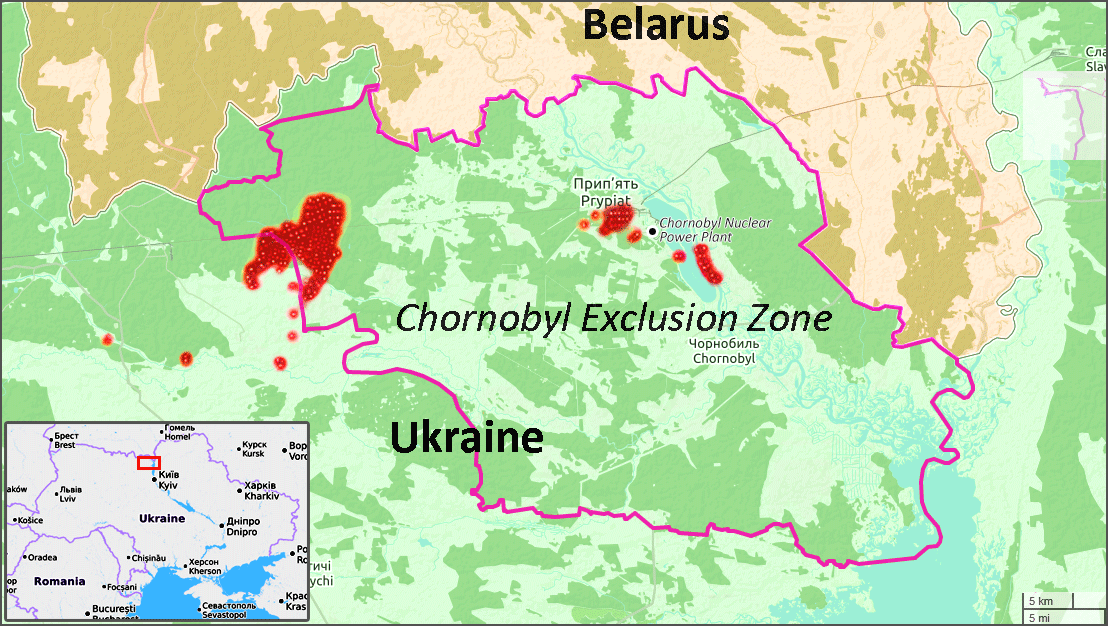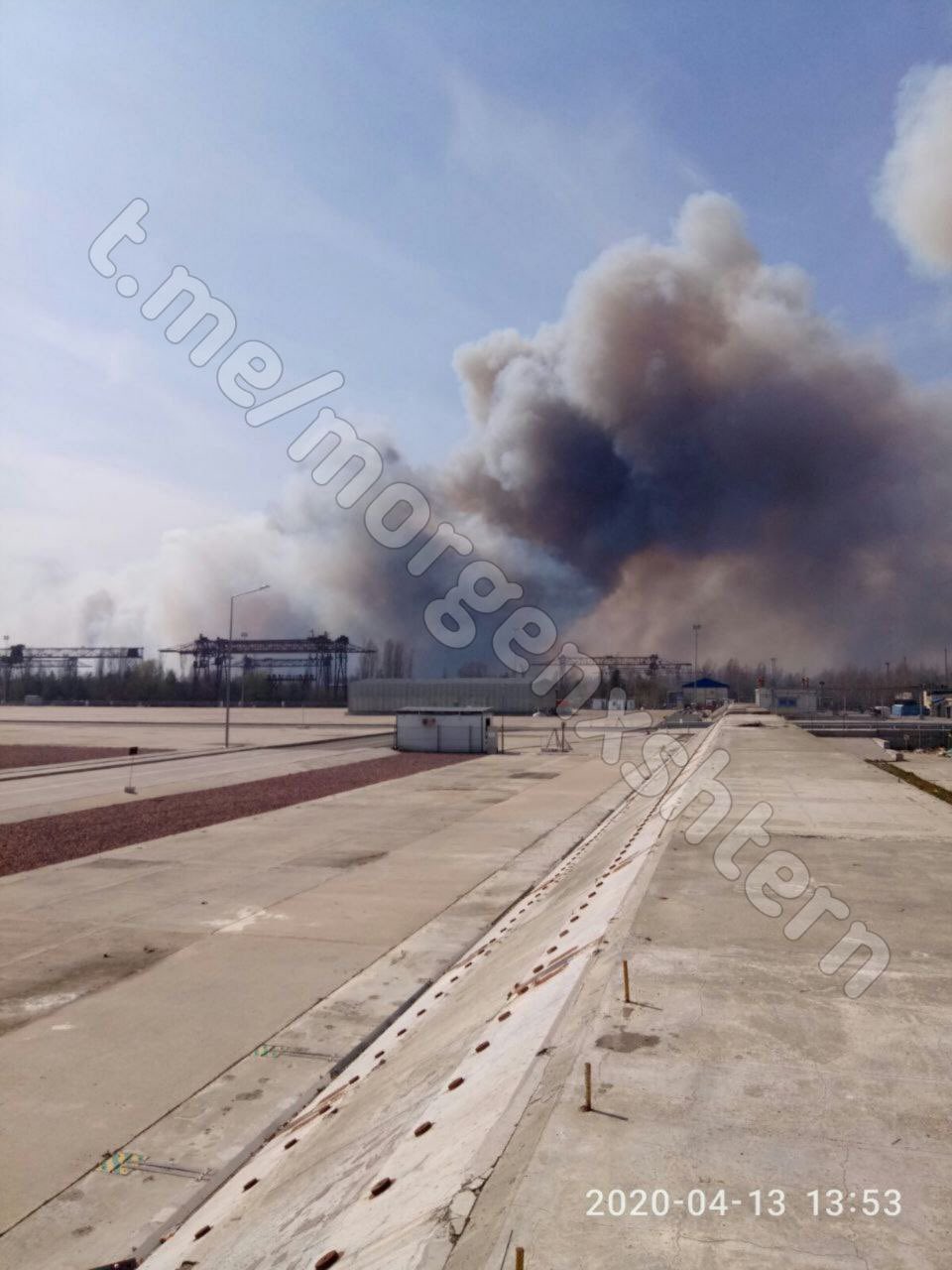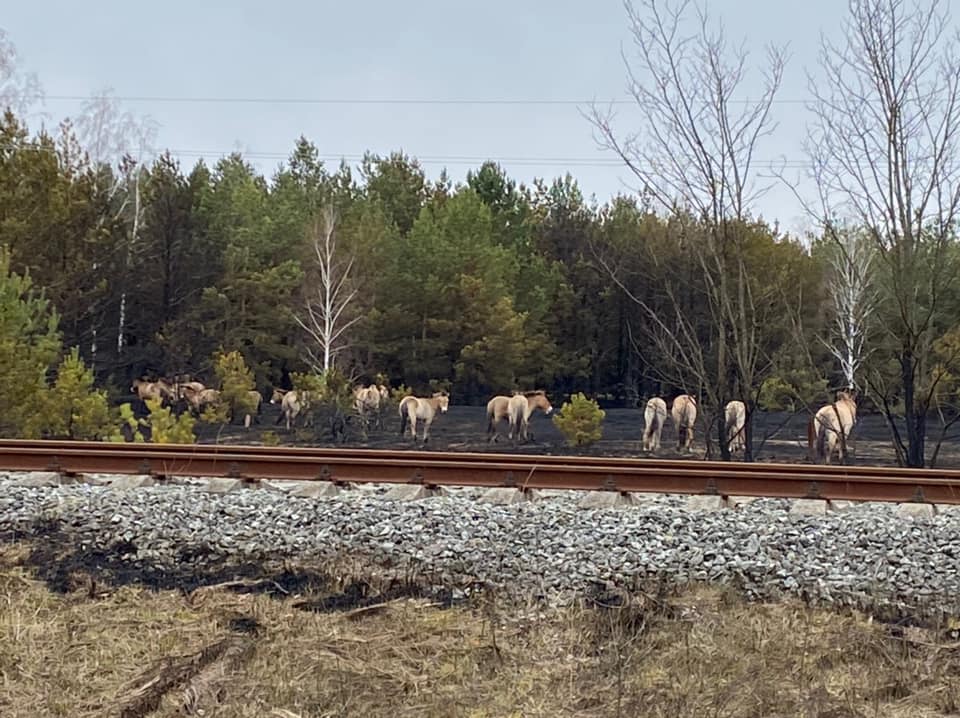This spring's first reports on forest blazes raging in the uninhabited exclusion zone near the Chornobyl NPP emerged on 4 April as Ukraine's State Emergency Service (DSNS) reported on wildfires in five forest districts in the area. The agency said it engaged 415 firefighters and other emergency staff and 98 pieces of equipment, including aircraft and put out the fire in the Kotovsk forestry, however, the carpet plants and forest floor continued burning in four other districts. The fires started on 3 April in the western part of the zone and spread to nearby forests.
On 12 April the fire neared the so-called Red Forest, one of the most contaminated areas in the Chornobyl Zone where the nuclear waste fell out after the reactor explosion at the power plant on 26 April 1986.
Yaroslav Yemelianenko, head of the Association of Chornobyl Tour Operators and member of the Public Council of the State Agency of Ukraine on Exclusion Zone Management raised the alarm and called the situation critical as the fire was approaching the ghost town of Prypiat and was only two kilometers away from Pidlisnyi nuclear waste facility. Yemelianenko stressed that volunteers and journalists were banned from the area and state agencies issued the reports that were too optimistic.
As firefighters were laboring to localize and extinguish the fires for more than a week, on 13 April the areas of ignition spread across the zone and kept approaching Prypiat, the nuclear waste facility, and the decommissioned Chornobyl Nuclear Power Plant, infamous for the 1986 disaster when one of its four nuclear reactors exploded polluting the air across Europe and nearby land with nuclear fuel and waste.
Officials say it's fine now
According to DSNS, as of 10:00 of 14 April, no sources of open fire left in the Chornobyl exclusion zone and "only insignificant smoldering of the forest floor in separate hot spots" were observed. The firefighters created about 110 kilometers of fire barrier lines. On 13 April, fire-fighting aviation that included three planes and three more helicopters dropped 538 tons of water. In total, 500 people and 110 pieces of equipment had been battling fires in the area.

On 7 April, the Chornobyl Biosphere Reserve shared a video showing the extent of the fire:
And this is 13 April video:
The State Environmental Inspectorate also made a statement that wildfires that broke out on 4 April in the zone surrounding the site of a nuclear disaster at the Chornobyl were successfully extinguished.
However, the State Agency of Ukraine on Exclusion Zone Management (SAUEZM) said that as of 12:00 new sources of ignition were spotted in the Zone near the former village of Kryva Hora and near the railway station of Yaniv. As well as firefighting continued at the moment near two other deserted villages of Lele and Chystohlazivka.

As the fire approached the premises of the NPP, the grass was on fire on the dam of the cooling pond, near the NPP's open-air switchgear, and on the temporary storage facility for technological materials. SAUEZM says
that the fires were localized and put out, the fire didn't damage the electric switchgear equipment, however, two living trailers burned out on the premises of the storage.
Is there a radiation hazard?
This 14 April morning's background radiation level in the city of Kyiv and Kiyv Oblast, as per DSNS, didn't exceed natural values with 0.012 milliroentgen per hour in Kyiv and around 0.011 mR/h in the region with the permissible level of 0.05 mR/h. And Ihor Oleksandrov, the shift chief at the Chornobyl NPP, assured that radiation level at the plant itself remained within norms and as of 14:00 of 14 April the fire didn't threaten the NPP.
Other sources also confirm the information on the normal levels of radiation. For example, Yehor Firsov, acting head off the State Ecological Inspection who has been closely following the situation published a Facebook post at 13:10 on 14 April, saying,
"In short, they've succeeded in extinguishing the fire, the [night and morning] rain was very helpful. The level of the radiation background has been monitored continually, yet the data we have show that it's generally within normal."
On the 13 April, Serhiy Myrnyi, director for science research of the Chornobyl University, told Ukrainske Radio that he could not remember such massive fires raging in the Exclusion Zone any time before. However, he said, the radiation levels could rise only within the Zone itself and there was no danger for those living in the nearby areas.
Suspected arsons
The Kyiv police charged a 27-year-old man with starting a mass fire in the Chornobyl zone. The police said on 6 April, the man living in the village of Rahivka near the alienated area told investigators that he had set some garbage and grass on fire "for fun." The suspected arsonist can be fined or punished with imprisonment up to five years.
However, as the fire sources were scattered across the entire exclusion zone, there could be several occasions of arson, as well as the fire could emerge naturally in some places.
Read also:
- The Chornobyl disaster and the power of story-telling: Russian propaganda around HBO miniseries
- Chornobyl nuclear disaster was tragedy in the making, declassified KGB files show
- Chornobyl: Reality and fiction in the popular miniseries, according to eyewitnesses
- Nature takes over Ukraine’s Chornobyl exclusion zone
- Meet the Ukrainians who returned to live in Chornobyl
- Rare animal and bird species return to Chornobyl after 30 years of abandonment
- Slavutych: the town born from the Chornobyl nuclear disaster
- Restoring the equilibrium: wild nature is making a comeback at the Chernobyl exclusion zone















